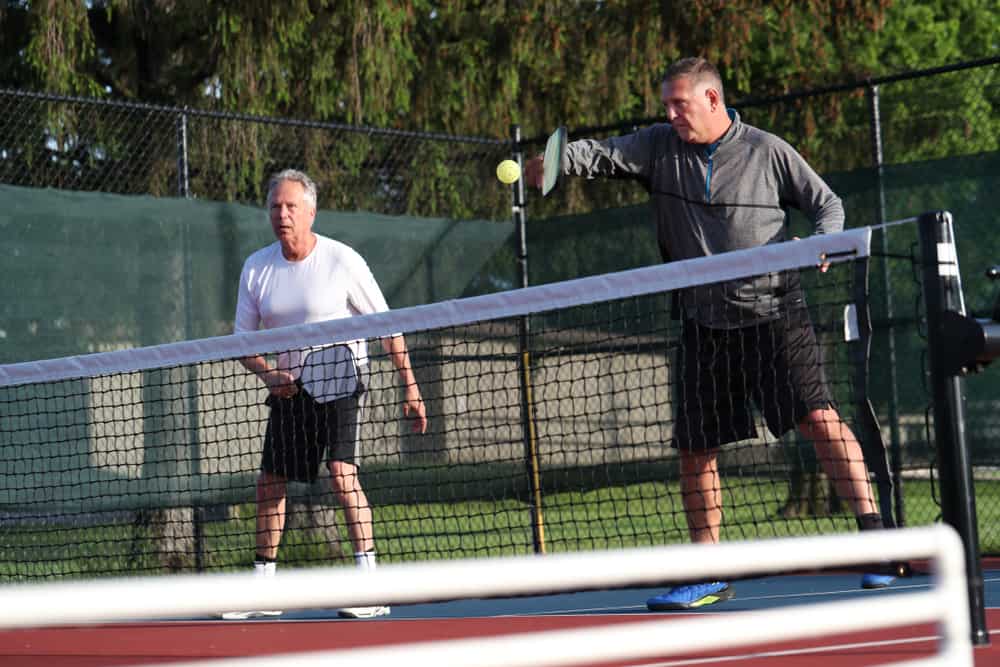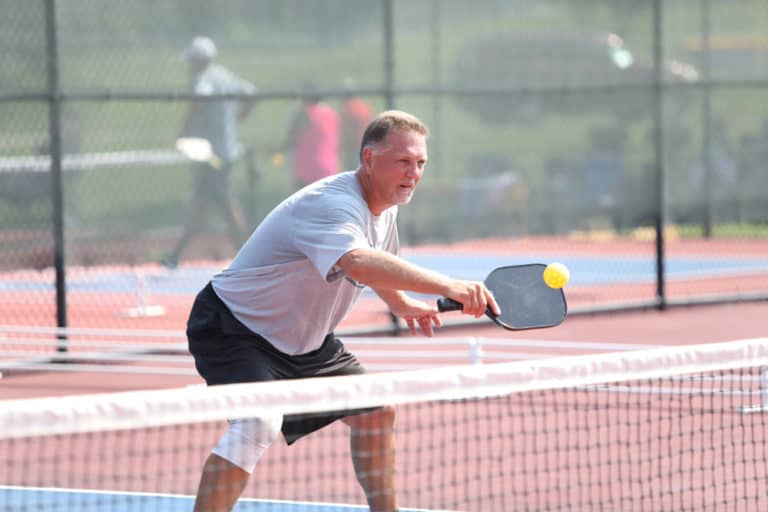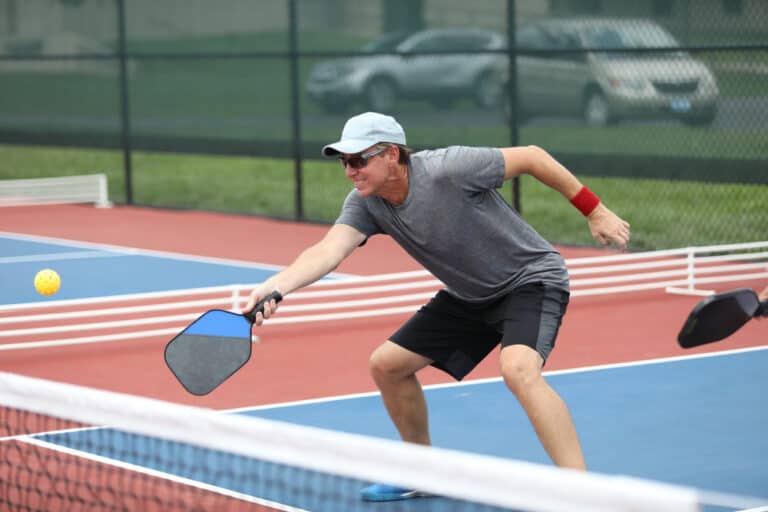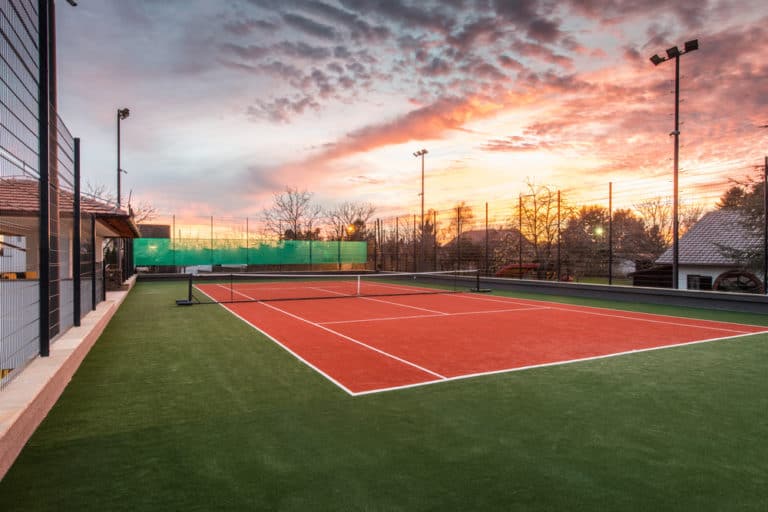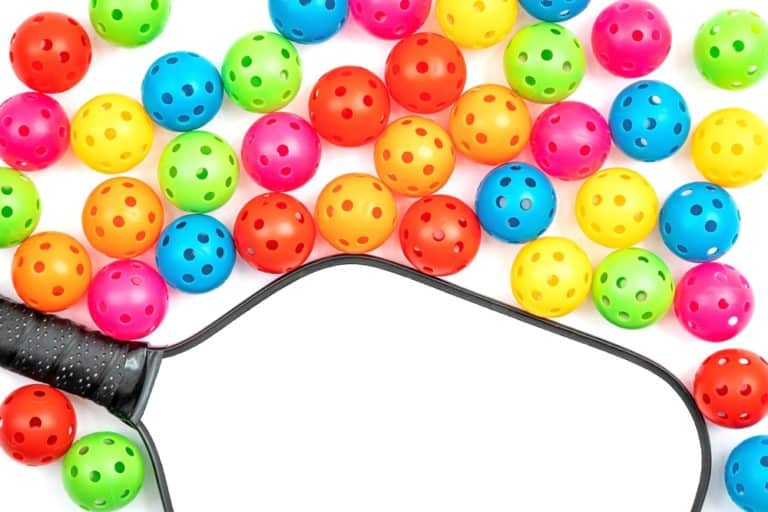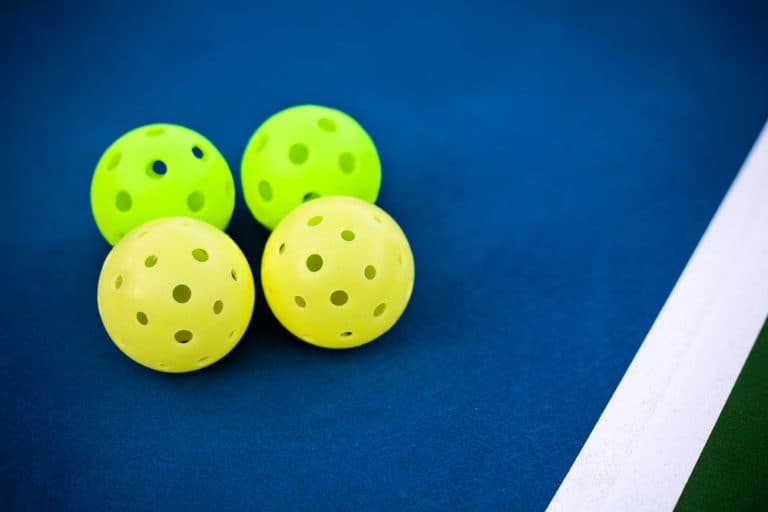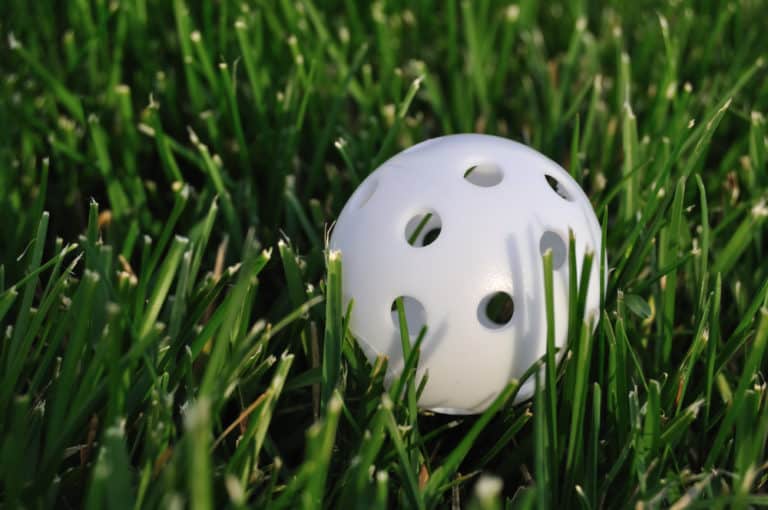What Is Shake And Bake In Pickleball?
If you’re new to pickleball or a seasoned casual pickler, you may have heard the term ‘shake and bake.’ You may even have seen it used without knowing what it was. It’s a popular strategy among professionals and high-level players that can overwhelm you if you don’t know how it’s done.
A ‘shake and bake’ is when a player on the serving team rushes to the net or crashes the net. The other player hangs back to drive the third shot hard towards the opponent’s court, forcing a weak return from them that travels higher through the air. The player at the net can then finish the point.
If you’ve heard the terms shake and back, crashing, and driving used in pickleball, don’t worry! It doesn’t involve driving a car onto the court. A shake and bake is a doubles strategy in pickleball that lets players finish points quickly. This article gives you all the information you may need on performing a ‘shake and bake.’
The Shake And Bake Explained
The shake and bake in pickleball is a strategy devised by players who prefer a more aggressive play style. A ‘shake and bake’ is used by the serving team in a doubles match to quickly win a point. If everything goes according to plan, the serving team should be able to win the point by the fifth shot.
The ‘shake and bake’ requires some setup before you or your teammate can perform the finishing shot. While there are some ways to defend against it, it’s an excellent way of taking the advantage, even if your opponents manage to defend against it.
A ‘shake and bake’ happens when a serving team’s player drives the third shot while their partner crashes to put away the point. The technical explanation of a shake and bake is difficult to understand if you’re a beginner. Luckily there’s a more straightforward way of explaining it.
When your opponent returns your team’s serve, the player on your team with the best drive shot returns the ball once again, as hard as possible. The reason for this is to force a softer and higher return shot from the opponent.
While one player drives the shot, the other player runs to the net, otherwise known as ‘crashing’. The crashing player should have better footwork, higher speed, and more reach. This is so that they can get to the net faster and reach a ball the opponent tries to aim away from them.
The crashing player is meant to finish the point. They stand at the net and wait for the opponents’ weaker and higher return after the drive shot. The crasher can then take advantage of the weak return to smash the ball or hit it where the opposing players cannot reach it.
The best team setup to perform the shake and bake is to have one player with a great drive and another with good speed and reach to crash the net. The driving player must also be able to aim the ball at a spot where the opponents can’t easily return it. The awkward return creates the opportunity for the crasher to win the point on the fifth shot.
The ‘shake and bake’ has the added advantage of putting pressure on the receiving team because of the aggressive opening moves from the serving team. Even if the strategy doesn’t win you the point, it pressures your opponent into a defensive position. At the same time, you and your teammate can go on the attack.
Best Ways To Successfully Perform The Shake And Bake
The shake and bake is a step-by-step strategy that requires players on a team to work together to perform it. However, teamwork isn’t the only factor to consider. Each player must also carry out their tasks properly for the move to be effective. There are a few ways to increase the odds of successfully performing the shake and bake.
Communicate With Your Partner
Communication between you and your partner will play a big part in whether or not the strategy succeeds. Before starting a point, communicate with your partner so that you are both aware of the plan ahead of time. This will put you a step ahead of your opponents when executing the play.
It’s essential to know which player is going to drive the third shot and which player is going to crash the net. If you and your partner haven’t communicated and both crash the net simultaneously, your strategy will probably fail. The second shot must bounce before being returned, so one player must hang back to receive it. This return is the drive shot.
If your partner is unaware that you want to shake and bake, they may hit a medium-power shot at your opponents, making it dangerous for you to crash the net. It’s dangerous because the opposing team’s player could then drive the ball towards you, which will be challenging to return. Even if you somehow return it, the opponents will have the attacking advantage.
A lack of communication could also cause a delay before you move towards the net. The delay gives your opponents some breathing room and more choice for a return. They’ll also have time to plan their return to disrupt your strategy.
Alternatively, if your partner drives the third shot but the power isn’t good enough, letting you know can give you time to back away from the net. Crashing the net when your opponent has hit a powerful shot can cost you the point. Controlling the power of a volley from a powerful surprise shot is tricky, and your opponents could reverse your strategy, using your weak return to smash the ball.
Decide Who Will Shake And Who Will Bake
Deciding which player will drive the third shot and which will crash the net before the point ensures that both teammates know their roles. The player with the stronger drive shot and control should be the shaker, while the faster player with better reach should crash the net and be the baker.
The crashing player should ideally have their forehand in the middle of the court. Forehand shots are typically more powerful than backhand shots, and the crasher is meant to finish the point. A weak shot could give the opponents a chance to return it. Ideally, a right-handed crasher should be on the left or odd side of the court, while a left-handed crasher should be on the right or even side.
Your opponent can disrupt the shake and bake by hitting your teammate’s weak drive at you as you crash the net. You must be able to back up quickly so that you aren’t in an awkward position when trying to return a fastball heading towards your body right in front of the net.
Make Sure The Drive Shot Quality Is Good
Your opponents can meet a poor drive from you or your teammate with a powerful return. If this return is aimed at the crashing player, it may catch them off guard or force them to return the ball at an awkward angle. This is likely if they aren’t in position yet and the opponent is hitting the ball towards them.
The best way to hit the third shot is to drive it with lots of power, as low over the net as possible. Your opponent won’t be able to put much power behind their return if your shot is strong and low. It will result in a weak shot that flies high enough over the net that your teammate can finish the point.
Letting your teammate know that your drive shot was poor and didn’t have enough power will allow you to change your strategy. For example, your teammate can hang back instead of crashing the net and wait for the return. A powerful shot is easier to return from further away. It gives you time to breathe and generate power.
The Driving Player Needs Excellent Control
The player driving the third shot must be able to control the ball and aim for a spot on the opponent’s court that makes the ball difficult to return. A high drive shot can go out of bounds or be returned easily. So it’s a good idea to keep the ball as low as possible over the net.
One tactic is to aim the drive shot at the weaker player of the opponents or to the backhand side of a player with a weak backhand. This will likely make the return shot softer for the crasher to finish the point. The driving player can also aim for an awkward spot on an opposing player’s body, such as their shoulder. Returning this shot is tricky and can also provide the crasher with a finishing opportunity.
Running players make more mistakes than stationary players because of uneven balance or momentum. If one of the opposing players is moving sideways, aiming far in front of them can force them to speed up. This tactic works well against players who like to stack because one player will always be dashing to the other side of the pickleball court.
Get To The Net As Fast As Possible
If you are the crashing player, get to the net as fast as possible. Once your teammate has served, rush to the net to pressure your opponent. Pressuring them will make it more likely that they’ll return the ball to your teammate who is further back, especially after a strong serve.
Delaying creates opportunities for your opponents to disrupt the play. Any delays when you’re crashing could result in your opponent returning the ball to your side of the court instead of your teammate’s. This effectively cancels your shake and bake strategy and removes your attacking advantage.
The crashing player must be fast to put pressure on the opponents and have good reach for when the opponent returns the drive shot. If the opponent hits the ball slightly away from the crasher, they need to be able to get to the ball to finish the point.
Good reach is necessary for finishing the point on the fifth shot, and in case the opponent returns the second shot in the crasher’s direction. A well-aimed serve return on the crasher’s side of the court means the crasher must be able to do two things. The first is getting to the ball in time, and the second is reaching a ball that your opponent thought was going over your head.
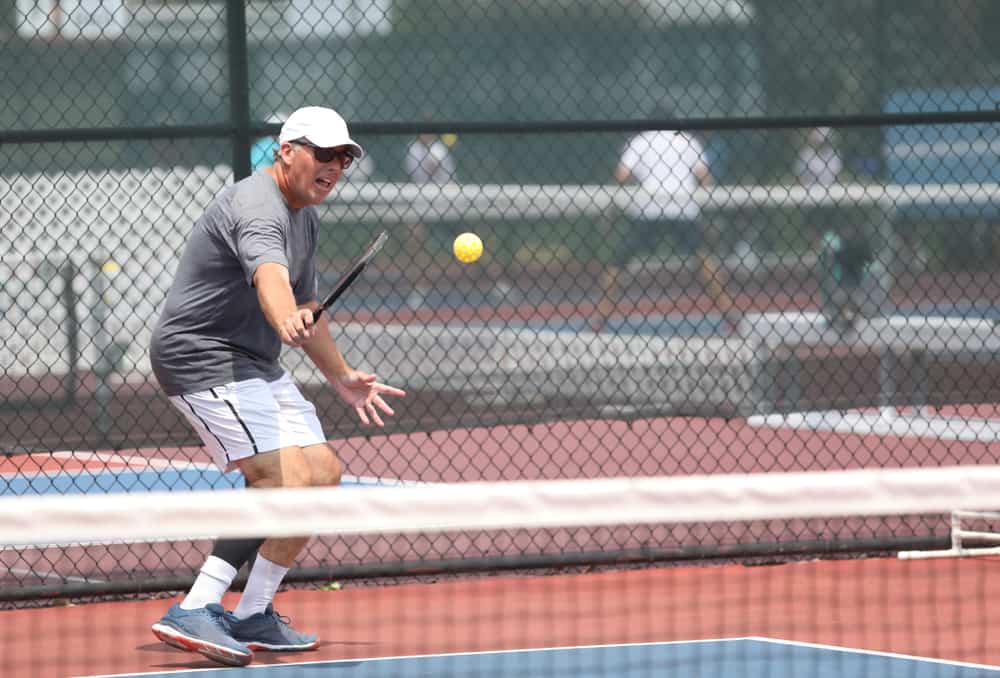
How To Defend Against A Shake And Bake
There are several ways to defend against or disrupt a shake and bake and force your opponents into a defensive position. The first one requires good control of power and placement. You can lob the serve return over the crasher’s head and force them to back up to return the ball or force the driving player to hastily return your lob with less power than they would be able to with a normal return.
The second way is to avoid returning the ball to the player who served. Typically, the serving player will be the shaker, so aiming away from them will force them out of position to try and return the shot. Another way of disrupting this strategy is to return the serve deep near the baseline. This forces the driving player back, giving you more time to return their shot.
You can also aim for the crasher’s body to make them stop or back away from the net. Aiming for the body makes the ball difficult to hit, so they’ll try to reposition themselves to make a better shot.
If you and your partner like to stack but are up against opponents who like the ‘shake and bake’ strategy, try to avoid stacking. Your opponents can take advantage of your need to move across the court to get into position, which can cost you points.
Conclusion
The ‘shake and bake’ is a strategy used in pickleball doubles games by aggressive-style players. It involves one player rushing to the net while the other drives the ball hard to force the opponent to make a weaker shot. The player at the net can then take advantage of this and finish the point.
There are advantages to this strategy and things you can do to increase your odds, but there are also ways to defend against it. Your opponents can aim for the openings created when you’re setting up the play. All-in-all it’s a very useful strategy – as long as it’s executed correctly.

